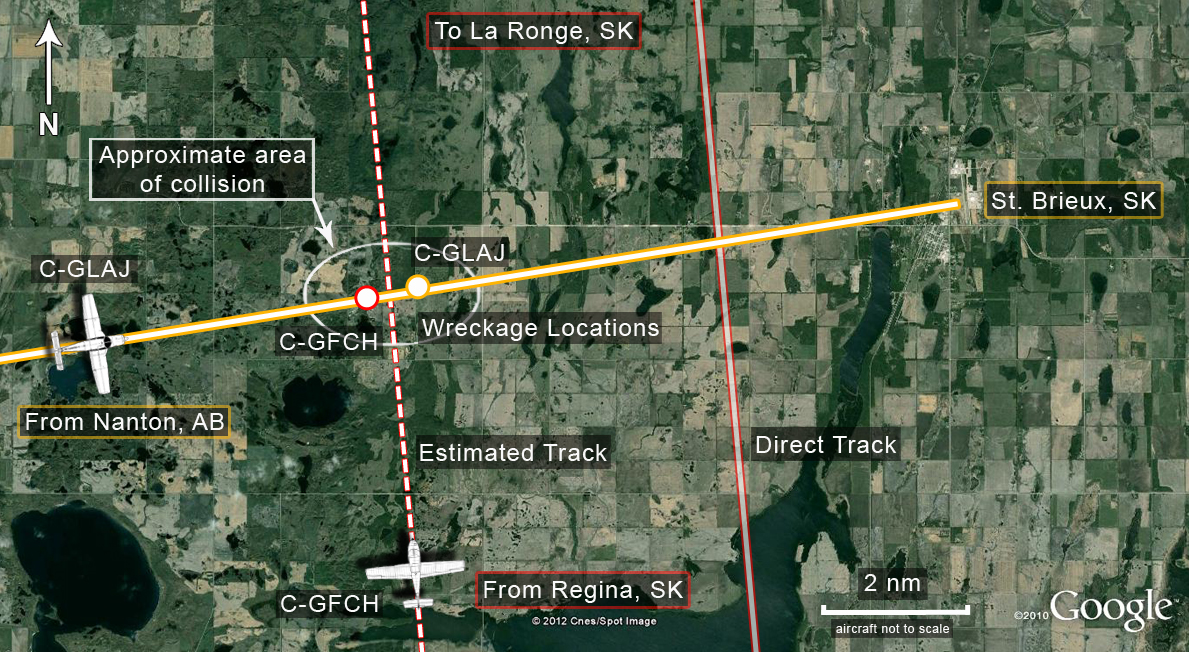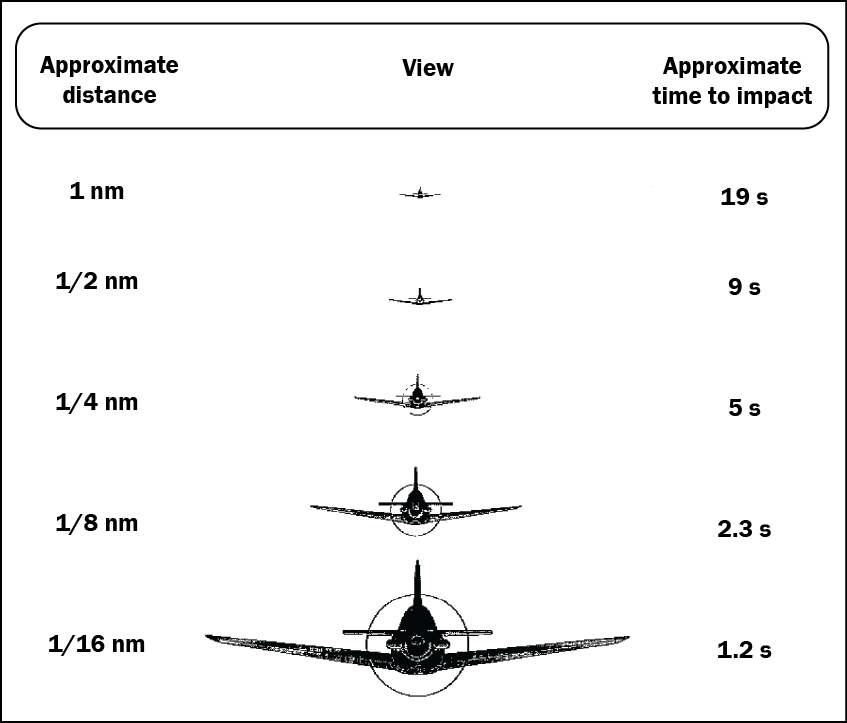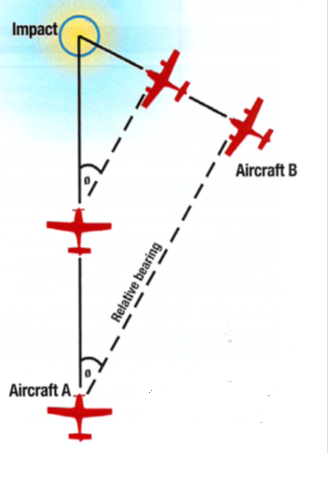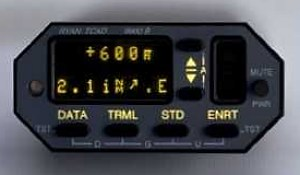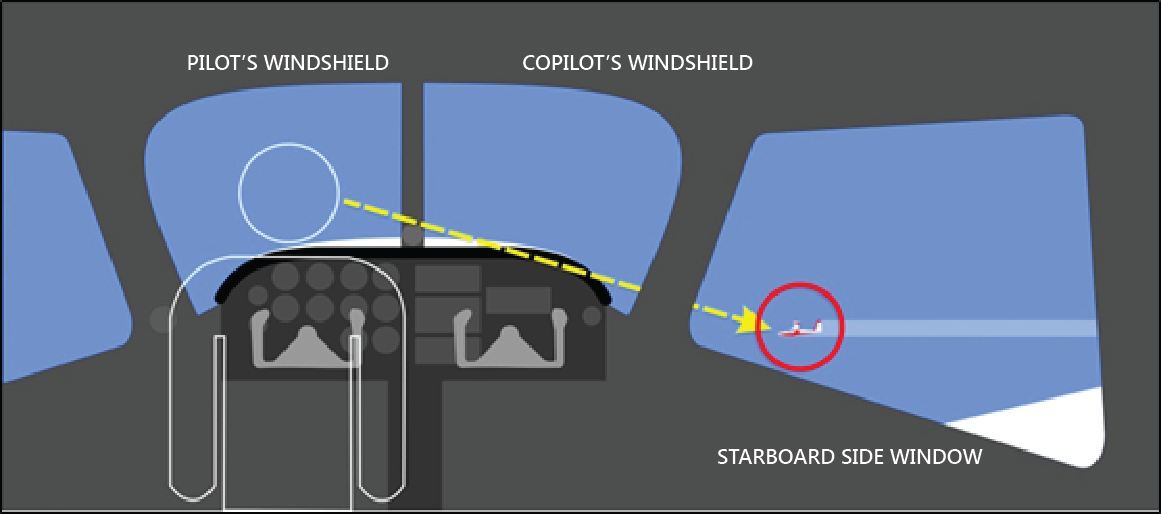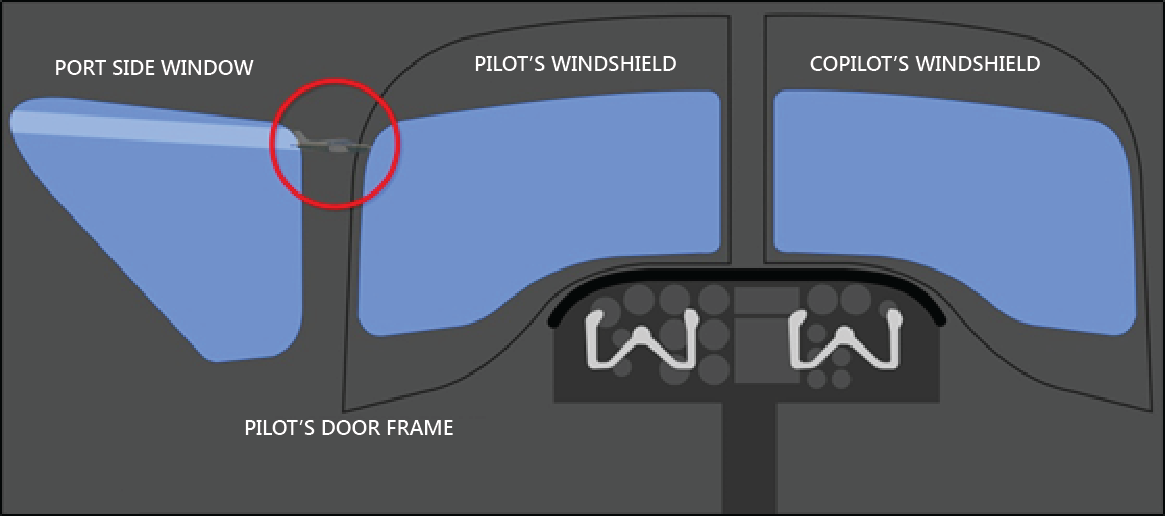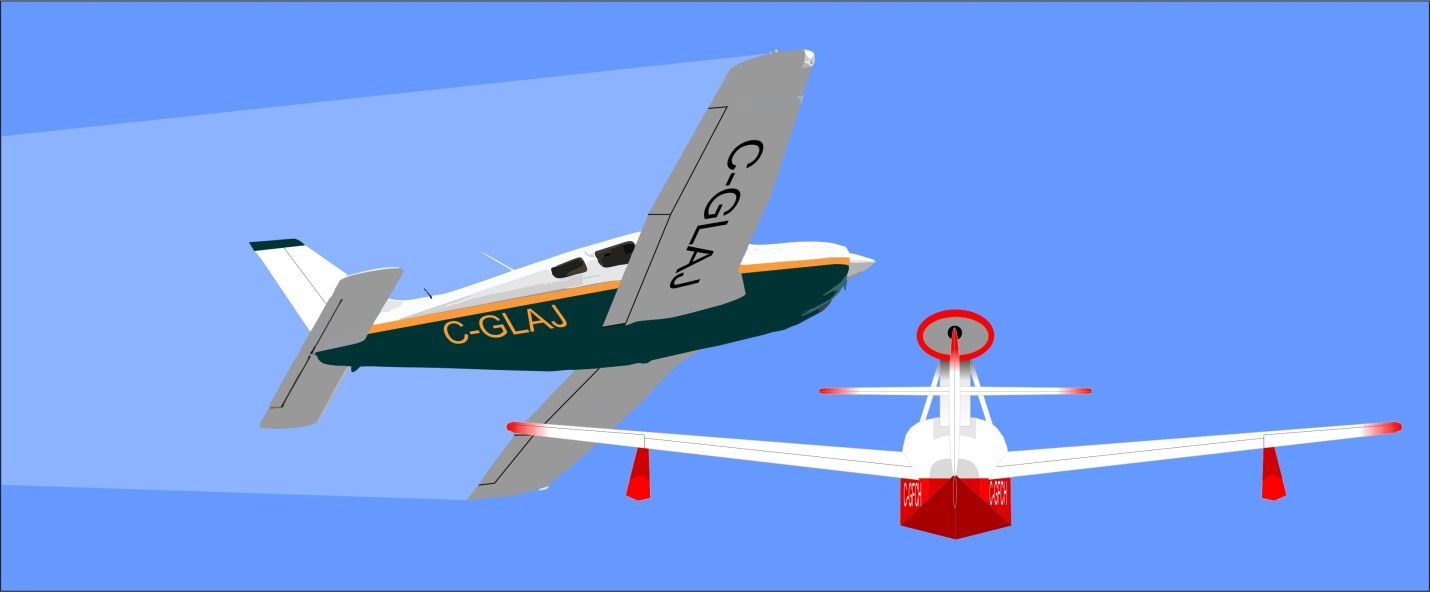Mid-air collision
Piper PA-28R-200 Arrow, C-GLAJ
and
Lake LA-4-200 Buccaneer, C-GFCH
St. Brieux, Saskatchewan, 8 nm W
The Transportation Safety Board of Canada (TSB) investigated this occurrence for the purpose of advancing transportation safety. It is not the function of the Board to assign fault or determine civil or criminal liability. This report is not created for use in the context of legal, disciplinary or other proceedings. See Ownership and use of content. Masculine pronouns and position titles may be used to signify all genders to comply with the Canadian Transportation Accident Investigation and Safety Board Act (S.C. 1989, c. 3).
Summary
The privately-registered Piper PA-28R-200 Arrow (registration C-GLAJ, serial number 28R-7435312) was approaching St. Brieux, Saskatchewan, on a flight from Nanton, Alberta, with the pilot and 2 passengers on board. A privately-registered Lake LA-4-200 Buccaneer amphibian (registration C-GFCH, serial number 786) was en route from Regina to La Ronge, Saskatchewan, with the pilot and 1 passenger on board. At approximately 0841 Central Standard Time, the 2 aircraft collided about 8 nautical miles (nm) west of St. Brieux and fell to the ground at 2 main sites about 0.5 nm apart. Both aircraft, which were being operated in accordance with visual flight rules, were destroyed and there were no survivors. There was no post-crash fire and the emergency locator transmitters did not activate.
Factual information
History of the flight
C- GLAJ departed Nanton, Alberta, at approximately 0630.Footnote 1 The pilot had filed a visual flight rules (VFR) flight plan and the route was to proceed direct from Nanton to St. Brieux (CKK2), Saskatchewan, elevation 1780 feet above sea level (asl).
C-GLAJ was at an altitude of 9500 feet asl, which was the correct altitude for direction of flight. The aircraft was visible on air traffic control (ATC) radar for most of the flight. The pilot was not communicating with ATC, nor was such communication required in the airspace in which the flight was being operated. Shortly after passing Saskatoon, Saskatchewan, C-GLAJ began a slow descent. It was last observed by ATC radar at 0840 at position 52°37′13″ N, 105°05′30″ W,Footnote 2 approximately 8 nautical miles (nm) west of St. Brieux at an altitude of approximately 4400 feet asl on a track of 064° true (T).
C-GFCH departed Regina International Airport at 0718. The pilot of C-GFCH had filed a flight itinerary with a family member. The itinerary indicated that the flight would proceed direct from Regina to La Ronge, Saskatchewan, and that it should arrive some time before 1030. The available information indicated that the aircraft was operating at an altitude of 4500 feet asl, which was the correct altitude for direction of flight. At approximately 0802, C-GFCH was visible on ATC radar, approximately 80 nm north of Regina, on a direct track of 352°T for La Ronge. The pilot was not required by regulation to communicate with ATC in the airspace in the vicinity of the accident site. Shortly after 0840, C-GFCH was observed to be rapidly descending in a nose-down attitude before disappearing below the tree line.
Pilots
The pilot of C-GLAJ held a private pilot licence with a valid Category 3 Medical Certificate, which required that the pilot wear glasses when flying. The pilot had accumulated approximately 1000 total flight hours on the PA-28R-200 type aircraft. Records indicate that the pilot of C-GLAJ was qualified for the flight in accordance with existing regulations.
The pilot of C-GFCH held a private pilot licence with a valid Category 3 Medical Certificate, which required that he wear glasses when flying. He had recently obtained his licence and had accumulated just over 100 total flight hours, with approximately 24 flight hours on the Lake LA-4-200 type aircraft. Records indicate that the pilot of C-GFCH was qualified for the flight in accordance with existing regulations.
It could not be determined whether either pilot was wearing glasses at the time of the accident.
Weather
There are no weather reports available for St. Brieux. The weather near the crash sites was clear and windy at the time of the occurrence. The nearest recorded weather was at Saskatoon, Saskatchewan, 69 nm southwest of St. Brieux. At the time of the occurrence, the reported weather at Saskatoon was wind 240° magnetic (M) at 10 knots, visibility 15 statute miles, a few clouds at 30 000 feet asl, temperature 13°C, dew point 0°C, and altimeter setting 30.14 inches of mercury. Weather was not considered to have been a factor in this accident.
Aircraft
C-GLAJ, manufactured in 1974, had accumulated approximately 2726 total hours since new. The aircraft was powered by a Textron Lycoming IO-360 engine. Records indicate that the aircraft was certified, equipped and maintained in accordance with existing regulations and approved procedures.Footnote 3 In 2006, the aircraft underwent several modifications. The rotating beacon on the vertical stabilizer was replaced with a strobe unit under Supplemental Type Certificate (STC) SA1571GL. The wingtips were replaced with upswept fiberglass units that incorporated recognition lights in the leading edge under STC SA1401NW. All of the aircraft windows were replaced with green tinted components. The aircraft was equipped with a Narco AT-50A transponder coupled to a Narco AR-850 blind encoder. A portable Garmin global positioning system (GPS) MAP 696 coupled to a remote antenna was installed in the cockpit. The aircraft was also equipped with a Zaon Portable Collision Avoidance System (PCAS). The pilot was known to have used the PCAS system regularly.
C-GFCH, manufactured in 1976, had accumulated approximately 1823 hours since new. It was powered by a Textron Lycoming IO-360 engine. The engine is mounted on a pylon above the wing facing rearward with a pusher propeller. Records indicate that the aircraft was certified, equipped and maintained in accordance with existing regulations and approved procedures. The Garmin avionics suite included a GNS-530 navigation/communication/GPS unit, a GTX-327 transponder, and a GMA-340 audio panel. Other avionics equipment included a Ryan 9900B (70-2400) traffic collision avoidance device (TCAD) and a Trans-Cal SSD120-30A altitude encoder. C-GFCH was not equipped with strobe lights, nor were they required by regulation.
Neither aircraft was equipped with a cockpit voice recorder or flight data recorder; such equipment was not required by regulation. Both aircraft were equipped with three-point lap/shoulder restraints. It could not be determined whether the landing lights of either aircraft were on at the time of the occurrence. However it was considered unlikely that they were, as the accident occurred in daylight hours and not in the immediate vicinity of an airport.
Collision avoidance under Visual Flight Rules
Pilots operating under VFR must maintain a continuous lookout for other aircraft, and are responsible for collision avoidance. Collision avoidance in visual meteorological conditions is based on the see-and-avoidFootnote 4 principle and VFR right-of-way regulations.Footnote 5 In this instance, the north-bound aircraft had the right-of-way.
In addition to the basic see-and-avoid principle, the Canadian Aviation Regulations (CARs) also require that VFR aircraft transmit traffic advisories when operating in and around airports in uncontrolled airspace. Such traffic advisories alert pilots to the presence of other aircraft and aid in VFR collision avoidance. The investigation revealed that the aircraft involved in this occurrence were making and monitoring traffic advisories. ATC is not required to maintain traffic separation between VFR aircraft. However, if a transponder-equipped aircraft requests traffic information and flight following, ATC may provide such services, depending on traffic and workload at the time.
Limitations of the see-and-avoid principle
Several published studies address the shortcomings of the see-and-avoid principle relied upon as a sole means of collision avoidance (Appendix B). As previously summarized by the TSB, “failures to see-and-avoid are due almost entirely to the failure to see”.Footnote 6
Research has shown that it takes approximately 12.5 seconds for a pilot to take evasive action upon recognition of an impending collision.Footnote 7 In addition to reaction time, distance is another critical factor which affects a pilot's ability to see and avoid a collision (Figure 2). This is especially true for aircraft beyond 2 nm, which are extremely difficult to see. Several physiological factors tend to exacerbate this difficulty, namely:
- Relative aircraft position;
- Empty field myopia — a condition where the crystalline lens in the human eye tends to focus on a point 3 to 5 feet in front of the eye;
- Limited field of vision — a frequent occurrence where aircraft window supports and cabin structure block fields of vision, resulting in a limited field of vision; and
- Blind spotsFootnote 8 — a characteristic of the human eye, the blind spot is located where the optic nerve connects to the eye. If something obstructs one eye's view (such as aircraft structure) the viewed object may be in the remaining eye's blind spot, causing it to disappear.
Aircraft on converging tracks, such as the 2 aircraft involved in this occurrence, can be difficult to see, because there is very little relative motion apparent to the observer. Figure 3 illustrates how the relative bearing between 2 converging aircraft remains constant as they converge. This results in the aircraft appearing stationary to each other, making each aircraft less conspicuous to the other. The closing speed of the aircraft was calculated as 194 knots.
Air traffic control radar surveillance
Both aircraft were equipped with a transponder. C-GLAJ had been assigned a transponder code, which transmitted the aircraft's position and altitude to ATC radar. C-GFCH had not been assigned a transponder code but was transmitting the 1200 code, which is the specified code for VFR aircraft operating below 10 000 feet when no other code is assigned by ATC. A review of the radar information leading up to the occurrence indicated that the 2 aircraft were proceeding on intersecting tracks and that C-GLAJ was descending through C-GFCH's altitude. C-GLAJ's descent is consistent with a descent to land in St. Brieux. This information was not being monitored by ATC at the time of the occurrence; monitoring was not required by regulation, since the flights were operating under VFR in uncontrolled airspace.
Collision avoidance systems
There are essentially 2 types of collision avoidance systems available for installation in aircraft: active systems, known as traffic collision avoidance systems (TCAS), and passive systems, marketed under a variety of descriptions depending on their function. There are 2 passive systems: the traffic collision avoidance detection (TCAD) system, and the portable collision avoidance system (PCAS). Both TCAD and PCAS rely on the premise that aircraft at different altitudes cannot collide. See below for a comparison of active versus passive collision avoidance systems:
TCAS, the active systems:
- Require a special mode S transponder;
- Have a greater range of traffic detection (up to 40 nm);
- Transmit extensive and complex data which can be received and decoded by another TCAS system; and
- Provide detailed avoidance instructions to pilots.
TCAD and PCAS, passive systems:
- Rely on other aircraft transponder interrogation reply signals;
- Have a limited detection range up to 7 nm; and
- Provide limited avoidance instructions.
Whereas active TCAS systems transmit interrogation messages similar to those sent by ATC surveillance radar systems that cause the transponders of receiving aircraft to reply, passive systems rely on replies generated as the result of other interrogators (either radar or TCAS). If a target airplane is out of radar coverage, its transponder will not send replies and it will be invisible to a passive collision avoidance system. Both the PCAS system on board C-GLAJ and the TCAD system installed on C-GFCH were passive systems.
The PCAS system on board C-GLAJ provides visual information to the pilot via a liquid crystal display traffic screen. As many as 3 potential conflicting aircraft can be displayed simultaneously. When detected, conflicting aircraft are prioritized; the closest conflicting aircraft is displayed in larger numbers on the left-hand side of the screen (Figure 4). Arrows indicate the targets' relative position to the PCAS-equipped aircraft. The traffic's relative position is displayed as left/right distance in nm and above or below in feet.
The PCAS has various range settings that change the horizontal detection window or range from 1.5 to 6 nm. Traffic beyond the selected range will not be displayed. The unit also has the ability to alert pilots with aural warnings. There are 2 types of aural warnings. One type is referred to as an advisory, where the unit sounds a series of beeps coupled with the voice instruction “traffic advisory — monitor closure rate”. The other type is referred to as an alert, and the unit sounds a series of beeps coupled with the voice instruction “traffic alert — obtain visual contact”. These aural warnings sound as a function of the range selected. For example, if the unit was set to its maximum detection range, an advisory would sound when the converging traffic was within 2 nm and the altitude separation was less than 1000 feet; the alert would sound when the traffic was 0.7 nm and the altitude separation was less than 700 feet. If the unit was set to its minimum detection range, the advisory would sound when the converging traffic was 0.6 nm and the altitude separation was less than 500 feet; the alert would sound when the converging traffic was less than 0.3 nm and the altitude separation was less than 500 feet.
The Ryan TCAD system, which was installed in C-GFCH, has a similar display with adjustable range settings. Ryan refers to this as adjusting the diameter of the air traffic shield (Photo 1). The range or shield sizes are used to select the size of the scanned area, depending on the flight segment.
It could not be determined whether either system generated an advisory or alert.
There is currently no requirement for Canadian-registered aircraft to be equipped with active or passive collision avoidance systems. Consequently, there is no regulatory guidance as to their use. It is important to note that these passive systems are intended only as a supplement to the visual acquisition of traffic.
Wreckage information
C-GLAJ struck the water surface of a small pond located in a wooded pasture at 52°37.5′ N, 105°05.4′ W. The absence of impact marks or surrounding tree breakage indicates that C-GLAJ struck the pond at a near vertical angle. Nearly all of the aircraft came to rest at this site, with the exception of pieces of the left wing. The avionics were severely damaged, making it impossible to determine what was in use at the time of the accident; however, one of the radios was tuned to 126.7 megahertz.Footnote 9 Analysis of the aircraft instruments indicated that the aircraft's speed at the time of impact was approximately 180 knots. The cabin and cockpit were severely damaged by impact forces.
C-GFCH struck the water surface of another small pond adjacent to a wooded area approximately 0.5 nm on a bearing of 252°M from the wreckage site of C-GLAJ. As with C-GLAJ, there were no impact marks or surrounding tree breakage, which indicated that C-GFCH struck the pond at a near vertical angle. C-GFCH was mostly intact but severely damaged. All of the aircraft parts, with the exception of 4 feet of the left wing, were located at this site. As with C-GLAJ, the avionics were severely damaged and provided no useful information. The cabin was crushed at some point during the impact with the surface of the pond, but remained intact.
Portions of the left wing sections from both aircraft were located close to each other approximately halfway between and slightly south of the wreckage sites. The outer half of the left ailerons of both aircraft were torn away and severely damaged.
The seat belt restraints had failed in both aircraft, indicating that the impact forces sustained were outside the design limits of those restraint systems.
The collision avoidance units on both aircraft were severely damaged and it was not possible to determine whether or not either unit was operating at the time of the accident.
TSB laboratory reports
The following TSB Laboratory report was completed:
- LP 130/2012 – Radar Data Analysis
This report is available from the TSB upon request.
Analysis
There is no indication that either an aircraft malfunction or the weather contributed to this occurrence. In this occurrence, the 2 aircraft were following intersecting tracks. Consequently, there was a risk that they could arrive at the same point in space at the same time. C-GLAJ began its descent near Saskatoon. In order to arrive at St Brieux's elevation of 1780 feet asl, the pilot had to descend through 4500 asl (C-GFCH's altitude). Both aircraft arrived at the same point and altitude at the same time, which resulted in a mid-air collision. The rest of this section will explain how it is possible for 2 aircraft to collide while being operated under VFR.
The relative position of each of the occurrence aircraft just before the collision would have made visual acquisition difficult. C-GLAJ was descending from a higher altitude than C-GFCH. As a result, C-GLAJ may have been obscured by the left wing of C-GFCH. Likewise, C-GFCH may have been obscured from C-GLAJ's pilot's view by the nose of C-GLAJ. The diagrams below indicate the positions of the aircraft relative to each other and the aircraft cockpit structures (Figure 5 and Figure 6).
Both aircraft were transponder-equipped and had collision avoidance systems on board. The 2 aircraft were at or beyond the limits of radar coverage required for these collision avoidance systems to operate. It is possible that one or both of the collision avoidance systems activated when the 2 aircraft were in range of each other and alerted either one or both of the pilots of an imminent collision. Depending on the detection range setting on C-GLAJ's PCAS, the time available for evasive action could have ranged from 2 minutes to as little as 4 seconds.
Due to the limited experience of C-GFCH's pilot and the complexity of the presentation features of the TCAD system on board, it is unlikely that the pilot would have been proficient in its use and operating procedures even if the system had activated. Additionally, physiological issues related to vision may have further reduced the pilots' available reaction time and resulted in their inability to avoid one another.
Inspection of the damage to both aircraft left wings and ailerons indicated that the pilot of C-GLAJ might have banked to the left, turning northward and away from C-GFCH. This type of evasive action would have resulted in C-GLAJ's left wing being down to the point where it only could have come in contact with the left wing of C-GFCH. A reconstruction of the likely aircraft positions at impact was prepared (Figure 7). The left outboard wing sections came to earth very close to each other and away from both main wreckage sites. This indicated that:
- They were shorn off in the air at the time of the collision;
- Either one or both of the aircraft had initiated some sort of turning avoidance manoeuvre; and
- Because of the structural damage, both aircraft would have been uncontrollable after the collision.
The failure of the see-and-avoid principle to avert this collision illustrates the residual risk associated with reliance on that principle as the sole means of collision avoidance.
Both aircraft cabins were crushed upon impact with their respective water surfaces, indicating that the accident was not survivable for the occupants of either aircraft.
Findings
Findings as to causes and contributing factors
- Both aircraft arrived at the same point and altitude at the same time, which resulted in a mid-air collision.
- The converging position of the 2 aircraft relative to each other, coupled with physiological vision limitations, likely rendered visual detection extremely difficult. As a result, the available reaction time was reduced to a point where collision avoidance was not possible.
- The left ailerons and part of the wings from both aircraft were shorn off in mid-air during the collision. This would have rendered both aircraft uncontrollable, and would have precluded either aircraft from recovering after the collision.
Findings as to risk
- Aircraft operating in visual flight rules conditions are at continued risk of collision when the see-and-avoid principle is relied upon as the sole means of collision avoidance.
Other findings
- The design and operating features of the collision avoidance systems in the aircraft involved in this occurrence are such that they can inadvertently be set to detection parameters resulting in insufficient warning time to pilots.
This report concludes the Transportation Safety Board's investigation into this occurrence. Consequently, the Board authorized the release of this report on . It was officially released on .
Appendices
Appendix A — Recognition and reaction times
| Running time | Action | Seconds |
|---|---|---|
| 00:00 | See object | 0.1 |
| 00:00 | Recognize aircraft | 1.0 |
| 00:01 | Become aware of collision course | 5.0 |
| 00:06 | Decision to turn left or right | 4.0 |
| 00:10 | Muscular reaction | 0.4 |
| 00:10 | Aircraft lag time | 2.0 |
| 00:12 | TOTAL TIME | 12.5 |
| Range | 600 MPH | 360 MPH | 194 knots |
|---|---|---|---|
| 10 miles | 60 s | 100 s | 160 s |
| 6 miles | 36 s | 60 s | 97 s |
| 5 miles | 30 s | 50 s | 80 s |
| 4 miles | 24 s | 40 s | 64 s |
| 3 miles | 18 s | 30 s | 48 s |
| 2 miles | 12 s | 20 s | 32 s |
| 1 mile | 6 s | 10 s | 16 s |
| 0.5 mile | 3 s | 5 s | 8 s |
| 0.25 miles | 1.5 s | 2.5 s | 4 s |
Appendix B — Bibliography and references
Australian Transport Safety Bureau, Research Report, Limitations of the See-and-Avoid Principle, April 1991.
Federal Aviation Administration, Advisory Circular 90-48C, Pilots' Role in Collision Avoidance, 18 March 1983.
Graham, W., See and Avoid / Cockpit Visibility, FAA Report DOT/FAA/CT-TN89/18, October 1989.
Transportation Safety Board of Canada, Aviation Investigation Report A06O0262.
